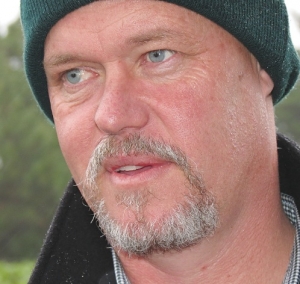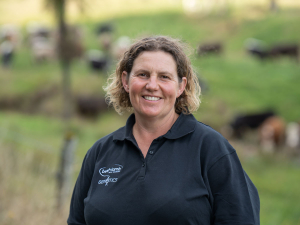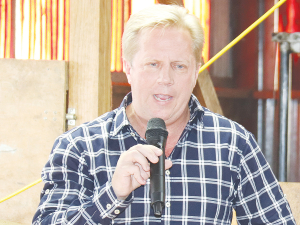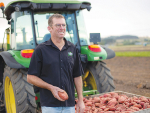Gibbs says New Zealand farming has always suffered from not having a very high energy feed that is cost effective for finishing animals, with much of the limited area of cereals grown targeted at human consumption. Price has also been a part of the equation.
“There aren’t any other high energy [winter] feeds which historically have been available for us,” he points out.
Winter brassicas have filled the gap, but compared to beet they have a narrow window for utilisation and are lower energy.
One of beet’s big advantages is it will grow in any environment from sand dunes at Riverton, Southland, to clay hills at Kaitaia, Northland. The other key point is it provides high quality feed when normal pasture quality is low and not good for finishing cattle.
“People have described fodder beet as probably the most exciting innovation in beef finishing in generations and I support that. I think it is a wonder crop in terms of its suitability for New Zealand but there is nothing magical about it: it’s simply high energy and it’s cheap.”
While lamb finishing on it is a possibility, Gibbs believes it will be most benefit in finishing beef because it doesn’t require top quality land, making it very cost effective.
“It is already being used extensively in the South Island in all aspects of dairy support from heifer rearing right through to winter grazing.”
The crop is helping herds achieve body condition score targets which are increasingly recognised as very important to reproduction and subsequent milk yield.
“The other advantage that beet offers is that it has a low nitrate leaching profile. It is a particularly low crude protein crop,” he notes.
That means stock on it don’t excrete a lot of surplus nitrogen, but nor is the protein so low they start metabolising tissue due to lack of it in the diet.
“It’s effectively in a sweet spot.”
Another plus is the flexibility to graze or ‘cut and carry’. Provided it is not particularly wet, it can be harvested with leaf intact and fed more or less immediately once or twice a week, or leaf material may be flailed off and bulbs lifted and stored several months, typically in windrows.
High yields and low harvest costs mean beet currently costs about a quarter what grass silage does in the South Island.
“That’s what’s really driving the uptake for it - it can be grown for 6-10c/kgDM and harvested for about 5c/kgDM. It is also a very high ME product that will last for four to five months.”
Gibbs notes the 10c/kgDM growing cost is “pretty generous really” and most crops come in comfortably below that.
Concerns about animal health with beet diets are better understood now and simple management protocols should avoid problems. The most important thing to remember is the high energy density. Just as nobody would suddenly start feeding cracked wheat to cows ad-lib, nor should they with beet.
“We’ve developed some extremely effective and very practical on farm techniques to ‘transition’ stock from a pasture based diet onto a high input adlib beet diet.”
Typically an animal starting from a no-beet background should be allocated 1-2kgDM/day of beet initially, and only introduced to the crop when fully fed.
Over the next two weeks intake of beet can be steadily increased, feeding a fibrous supplement such as cereal straw, meadow hay or possibly bailage or silage at the sametime. The aim is to find the cheapest fibre supplement available.
The crop grows well in both islands but the North has a slight advantage because it’s warmer so the growing season is longer, says Gibbs.
A consistent or rising soil temperature of 10-12 degrees for five days is the general rule of thumb for when to plant, he notes.
Why it hasn’t occupied large areas of land previously is probably because it wasn’t realised how high yields could be here, or that it could be grazed in situ.
“It is a thoroughly kiwi innovation.... the only other countries that graze it are the ones that have come to New Zealand, seen it happen and gone back and done it.”
A fodder beet ‘club’ to facilitate information transfer on growing and using beet is being set up.
“We’ll hold seminars and have some on-farm coaching as well. All this will be up and running before the planting season,” says Gibbs.
To register interest in joining a fodder beet club, e-mail This email address is being protected from spambots. You need JavaScript enabled to view it.









